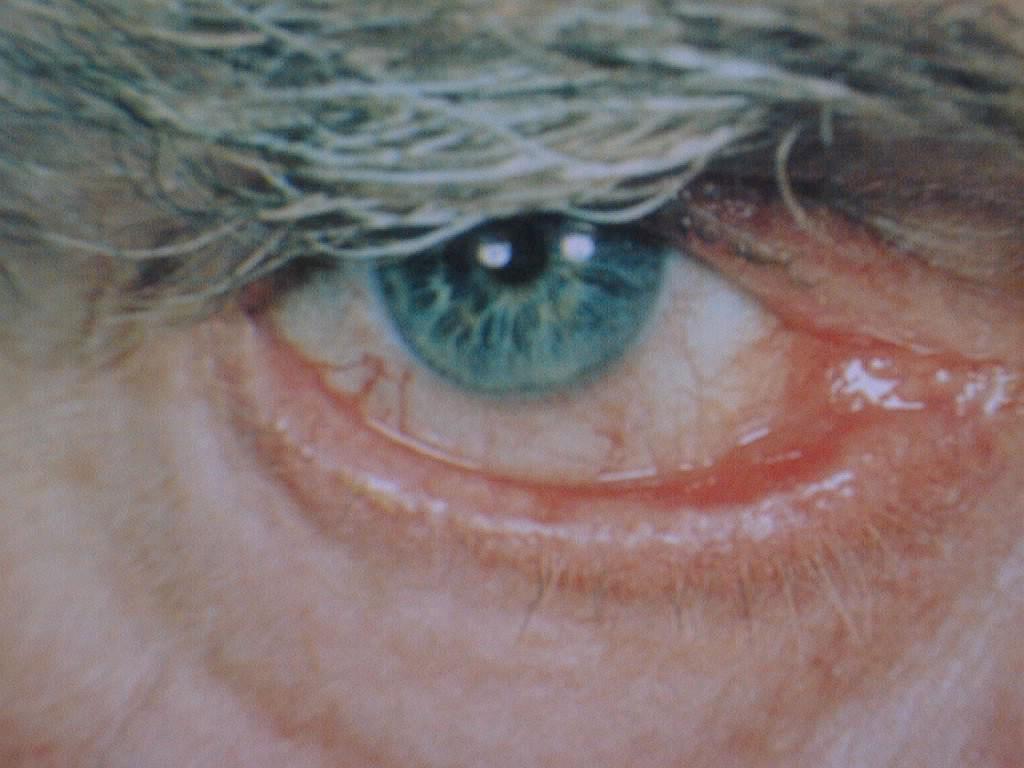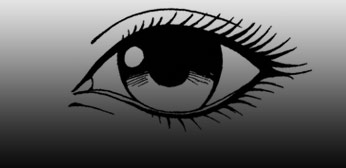Epiphora or watery eye is caused by increased secretion of tears (usually a reflex, due to disease of the anterior segment), or impaired drainage. Reflex excessive tearing does not require special treatment.
Causes:
Reduced drainage is caused by obstruction of the lacrimal canals. The old drainage may be weakened due to eyelid laxity because the lower lacrimal dot is no longer immersed in the lacrimal lake (i.e. the initial ectropion). In a normal position the eyelid in an intimate contact with the eyeball, and the edge of the lid does not touch the eye, nor is too separated from him. In pathological cases, eyelid and the edge of the lid are separated from the eye, twisting outward (ectropium), or twisting inwards (entropion).
ENTROPY
Entropy is twisting the edge of the eyelid to the eyeball so that the lashes come in contact with the cornea and the conjunctiva.
Causes:
The causes of entropion are scarring changes on the conjunctiva of the eyelid, age-related changes in the skin of the eyelid, inflammation of the edge of the eyelid and conjunctiva.
Symptoms:
Foreign body sensation in the eye and scratching.
Types:
Mechanical entropy
It occurs most commonly on the upper eyelid as a result of a swelled tissue, tumor, or excess skin. If it appears on the lower eyelid it may be stimulatory contraction of musculus orbicularis occuli, with the conjunctival changes.
Treatment: removal of the cause
Spastic entropy
The consequence of contraction of the m.orbicularisa occuli due to inflammation.
Treatment: Treatment of inflammation.
Involutive entropy
It occurs in the elderly due to atrophy of adipose tissue and reduced elasticity of the skin of the eyelid. Eyeball is immersed and when associated with muscle cramps it promotes the creation of spastic entropion.
Treatment: removal of excess less tense skin.
Cicatricial entropy
The result is tissue destruction and tarsus, due to inflammation, burns, or improper operation of the tarsus area.
Treatment: treat the disease that caused entropy; Injection: 2% Novocaine, 2-4 xylocain% or 50% alcohol in m.orbicularis occuli; surgery
Treatment:
The withdrawal of the eyelid from the eye by sellotape (hanzaplast), may temporarily help, in more severe cases, the lid must be operatively returned to its normal position.
ECTROPION
Ectropion is a distortion of the eyelid, so that the conjunctiva is facing outward and it is exposed to outside influences.

Symptoms:
drying, redness, swelling.
Types:
Mechanical ectropion
Occurs due to swelling of the eyelid tissue in the tarsus and conjunctiva. Overgrowth of tissue leads to distortion of the eyelid edge towards the cheek with exposure of the eyeball and conjunctiva.
Spastic ectropion
It occurs as a result of acute inflammation in the conjunctiva and spasms of the orbicular muscle. Chronic spastic ectropion is caused by increased tension or the orbicularis occuli behind the tarsus, so it twists.
Involutive ectropion
It is the consequence of a failure of tonus m. orbicularis occuli. The distortion of the watery dot (punctum Lacrimae) outside the tear lake (caruncula lacrimalis) occurs, resulting in a tearing.
Cicatricial ectropion
It occurs as a result of scarring after eyelid injuries, burns, eczema. Leads to withdrawal of the eyelid lamellae outwards.
Paralytic ectropion
It is the result of a transient or permanent paralysis n. facialis, and the eyelids cannot close enough so the eyeball is continuously exposed. This condition is called lagophtalmus (when the eyelids cannot cover the eyeball), and occurs with paralysis of the facial nerve, skull base fracture, some viral or rheumatic inflammation.
Blepharochalasis
Crease of the upper eyelid skin, which hangs over the edge of the eyelid and can cover the pupil hole, and thus interfere with vision. Occurs due to loss of elasticity of the skin over the years.
Treatment: removal of excess skin (blepharoplastics).
Treatment:
Ectropion is treated surgically, by the shortening of the muscle in the eyelid, if it affects the lower eyelid surgery and prevents drainage of tears, so constantly wiping tem causes the aggravation of the disease.
TRICHIASIS
That is a growth of the eye lashes towards the eyeball. It may be due to entropion, or an irregular growth of a few lashes with no apparent cause.

Treatment:
If trichiasis is a result of entropy, it should be surgically repaired. Individual lashes of irregular growth are removed by electroepilation.





 July 16, 2012
July 16, 2012